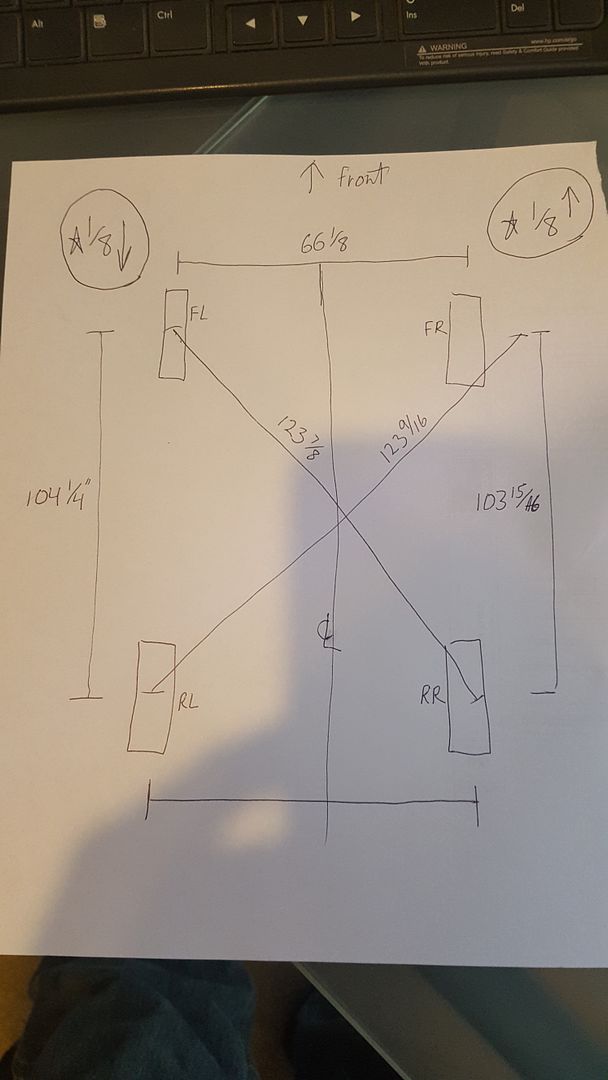Hey Dan. You did the alignment part a touch backwards. You must first locate square, parallel, track and wheel base. First is making sure the frame mounting points are correct. You were able to get each corner relative to itself, but you don't know if your track is offset, or parallel. Or, if wb is exact each side. So basically, your car could still crab without doing the full process.
Basically to do this, you will be creating a large rectangle, with an X in the middle for your measurements. With chassis lifted, you will be using a plumb bob to transfer the mounting point locations to the ground, and put some tape on the floor, and mark position of mounting points on chassis. Based on marks, measure for equal wb, equal track (based on centerline), then square with diagonal measurements. If that all checks out, then proceed to installing the lower control arms with spacers side to side, and depth of the rod end equal (unless you had to correct for anything in your previous chassis measurements).
Now, with lower control arms installed, set them at 0 degree angle. This is how you want to set them to measure again. This time, you will be using a consistent position near end of control arms ( I use ball joint zerk fittings if equal, or ball joint centerline for measuring) and repeating your square, and parallel measurements a second time. If all checks out, then you are ready to install uppers, and use then you can use your basic alignment procedure to set uppers. If you cannot get the uppers in the correct position, then you will need to move the lower. If you move one lower, you must move them all, or you loose you previous squareness.
Here is a pic of the measurements from my car, using the ball joint measurements. My suspension was already on car, and this process done, but there is corrections to be made as they didn't correct wb parallels.
You can see, to make my car square, the front left needs to be moved forward 1/8", and front right needs to be moved back 1/8". That will equal out all of my measurements and the wheel placement based on bodywork, shows that this exact move, will center both fronts in the openings.
I don't have all of the measurements in there, but it will give you an idea of how to set up the measuring grid and the measurements to take. I will still be fully disassembling my car, and will start the process from step one upon reassembly. I just wanted a baseline initially to show if there were any major problems.



